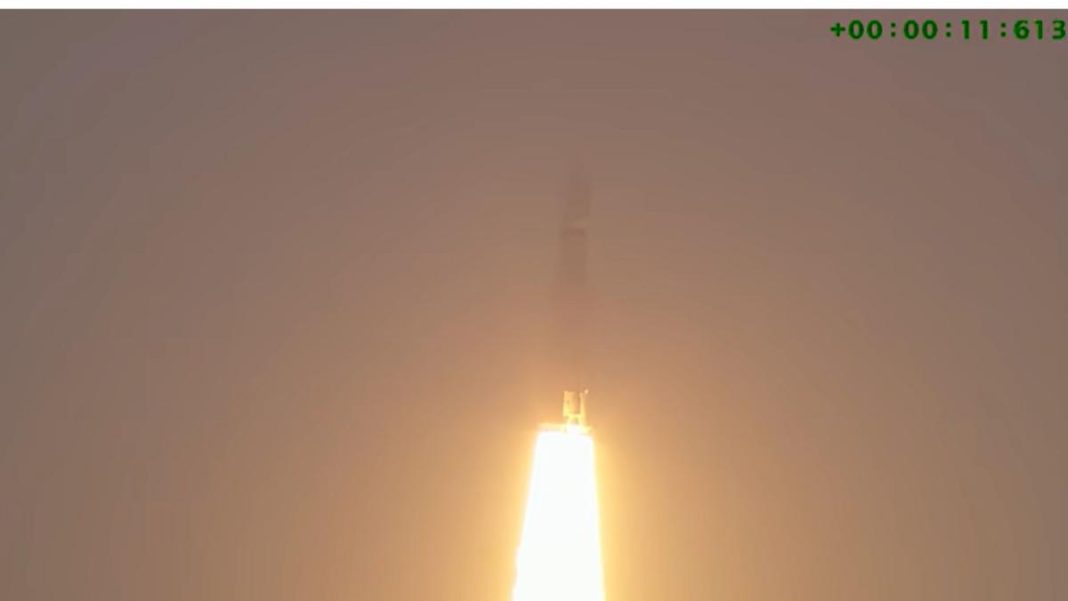Key Takeaways
- ISRO successfully launched its heaviest communication satellite, CMS-03 (4,410 kg), from Indian soil.
- The LVM3-M5 rocket, nicknamed ‘Bahubali,’ achieved a perfect 8/8 success record.
- This launch marks a major step for India’s self-reliance in launching heavy satellites.
In a historic achievement for India’s space program, the Indian Space Research Organisation (ISRO) successfully placed its heaviest communication satellite, CMS-03, into orbit on Sunday, November 2, 2025. The 4,410 kg satellite was launched using the homegrown LVM3-M5 rocket, fondly called ‘Bahubali’ for its heavy-lift capability.
Satellite Details and Mission Significance
The CMS-03 is a multi-band communication satellite designed to provide services over the Indian landmass and a wide oceanic region for at least 15 years. It was precisely injected into the intended Geosynchronous Transfer Orbit (GTO) and serves as a replacement for the GSAT-7 series launched in 2013.
ISRO Chairman V Narayanan, addressing the nation from the Mission Control Center, declared the satellite “precisely injected.” He highlighted the LVM3’s perfect launch record, noting its previous success with the “most prestigious Chandrayaan-3” mission. He described the CMS-03 launch as “yet another shining example of Atmanirbhar Bharat,” despite challenging weather conditions that scientists overcame through hard work.
India’s Launch Vehicle Capabilities
This mission ends India’s previous reliance on the Kourou launch base in French Guiana and Arianespace’s Ariane rockets for heavier satellites. The LVM3-M5, a three-stage vehicle with two solid strap-ons, a liquid core, and a cryogenic stage, provides full self-reliance for launching satellites up to 4,000 kg into GTO.
ISRO utilizes a family of launch vehicles for different missions:
- SSLV: For satellites up to 500 kg to Low Earth Orbit.
- PSLV: The trusted workhorse, carrying ~1,750 kg.
- GSLV: For heavier satellites of ~2,200 kg.
- LVM3: Enhanced capability for payloads over 4,000 kg.
LVM3’s Proven Track Record and Future
The LVM3-M5 was the rocket’s fifth operational flight. Developed with completely indigenous technology, it boasts a 100% success rate across all eight launches, including the first development flight in December 2014. For the ambitious Gaganyaan mission, ISRO has designated a human-rated version of this rocket, called HRLV.
The rocket’s powerful cryogenic stage enables it to carry 4,000 kg to GTO and 8,000 kg to Low Earth Orbit. Its S200 solid boosters, developed in Thiruvananthapuram, and the L110 liquid stage with Vikas engines from the Liquid Propulsion Systems Centre, make it a fully homegrown achievement. The LVM3’s previous mission was the successful Chandrayaan-3 launch in 2023.




